Books that encourage kids of all colors to be inclusive and empathetic

We asked the folks at Lee and Low Books, the largest multicultural children's book publisher in the U.S., to recommend books that are great read-aloud stories AND tools for helping raise kids who are brave, thoughtful and informed about race. In other words, kids who embrace race! In response, Lee and Low's Literary Specialist, Katie Potter, created four lists of fantastic stories for kids, one for each of the four, broad goals for the work of the EmbraceRace community.
- Books that inspire resilience in kids of color
- Books that encourage kids of all colors to be inclusive and empathetic (find below)
- Books that support kids to think critically about racial inequity
- Books that animate kids (and their adults!) to be racial justice advocates for all kids
Books that encourage kids of all colors to be inclusive and empathetic
Children demonstrate compassion and show empathy for people through a variety of approaches. The following books exemplify inclusiveness, demonstrate ways to understand the feelings of another person, and exhibit what it means to appreciate your own self.

Ahimsa
by Supriya Kelkar
Grades 4–8
In 1942, after Mahatma Gandhi asks Indians to give one family member to the freedom movement, ten-year-old Anjali is devastated to think of her father risking his life for the freedom struggle.
But it turns out he isn’t the one joining. Anjali’s mother is. And with this change comes many more adjustments designed to improve their country and use “ahimsa”—non-violent resistance—to stand up to the British government. First the family must trade in their fine foreign-made clothes for homespun cotton, so Anjali has to give up her prettiest belongings. Then her mother decides to reach out to the Dalit community, the “untouchables” of society. Anjali is forced to get over her past prejudices as her family becomes increasingly involved in the movement.
When Anjali’s mother is jailed, Anjali must step out of her comfort zone to take over her mother’s work, ensuring that her little part of the independence movement is completed.
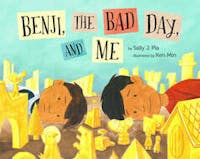
Benji, the Bad Day, and Me
Written by Sally Pla, illustrated by Ken Min
Grades Pre-K–5
Nothing seems to be going right for Sammy today. At school, he got in trouble for kicking a fence, then the cafeteria ran out of pizza for lunch. After he walks home in the pouring rain, he finds his autistic little brother Benji is having a bad day too. On days like this, Benji has a special play-box where he goes to feel cozy and safe. Sammy doesn't have a special place, and he's convinced no one cares how he feels or even notices him. But somebody is noticing, and may just have an idea on how to help Sammy feel better.
In this tender story about siblings, author Sally J. Pla shares her experience of raising sons with different personality traits and needs. Benji, the Bad Day, and Me embraces the philosophy that we are all part of a wide spectrum of neurodiversity. And on those really bad, rotten days, you can always count on family to be there for you.
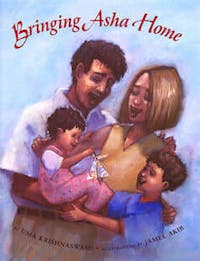
Bringing Asha Home
Written by Uma Krishnaswami, Illustrated by Jamel Akib
Grades Pre-K–4
It's Rakhi, the Hindu holiday special to brothers and sisters, and Arun wishes he had a sister with whom to celebrate. Soon it looks as if his wish will come true. His parents are going to adopt a baby girl named Asha. She is coming all the way from India, where Arun's dad was born.
The family prepares for Asha's arrival, not knowing it will be almost a year until they receive governmental approval to bring Asha home. Arun is impatient and struggles to accept the long delay, but as time passes he finds his own special ways to build a bond with his sister, who is still halfway around the world.
With warmth and honesty, this tender story taps into the feelings of longing, love and joy that adoption brings to many families. Readers will find reassurance knowing there is more than one way to become part of a loving family.
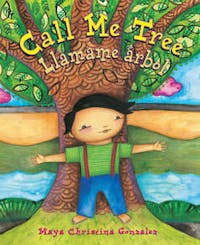
Call Me Tree/Llamáme Árbol
Written and illustrated by Maya Christina Gonzalez
Grades Pre-K–3
What does it mean to be like a tree?
For one young child, it all begins
as a tiny seed
that is free to grow
and reach out to others
while standing strong and tall--
just like a tree in the natural world.
With this gentle and imaginative story about becoming your fullest self, Maya Christina Gonzalez empowers young readers to dream and reach . . . and to be as free and unique as trees.
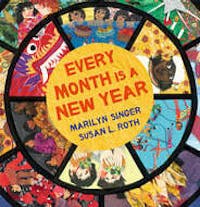
Every Month is a New Year
Written by Marilyn Singer, Illustrated by Susan L. Roth
Grades 1–8
In many places around the globe, the new year starts on January 1. But not everywhere! Chinese New Year is celebrated in January or February. Iranians observe Nowruz in March. For Thai people, Songkran occurs in April. Ethiopians greet the new year at Enkutatash in September. All these celebrations, and many others, have deep-rooted traditions and treasured customs.
Acclaimed poet Marilyn Singer has created a lively poetry collection that highlights sixteen of these fascinating festivities, some well-known and some less familiar. Together with Susan L. Roth’s captivating collage illustrations, the poems take readers to the heart of these beloved holidays. Every month of the year, somewhere in the world people celebrate with joy and good wishes for a happy new year.

Lend a Hand: Poems About Giving
Written by John Frank, Illustrated by London Ladd
Grades Pre-K–5
"The spread of warmth
should have no bounds."
Making a difference in the world can be as simple as planting a tree, giving up your seat on a bus to a disabled person, or training a puppy to become a guide dog. These are just a few of the simple acts of kindness featured in this collection of fourteen original poems. Each poem emphasizes the compassion and the joy of giving. Representing diverse voices—different ages and backgrounds—the collection shows the bridging of boundaries between people who are often perceived as being different from one another. The first step in bridging those boundaries is to extend a hand.

Marisol McDonald Doesn’t Match/Marisol McDonald no combina
Written by Monica Brown, Illustrated by Sara Palacios
Grades Pre-K–2
Marisol McDonald has flaming red hair and nut-brown skin. Polka dots and stripes are her favorite combination. She prefers peanut butter and jelly burritos in her lunch box. To Marisol, these seemingly mismatched things make perfect sense together.
Other people wrinkle their nose in confusion at Marisol—can’t she just choose one or the other? Try as she might, in a world where everyone tries to put this biracial, Peruvian-Scottish-American girl into a box, Marisol McDonald doesn’t match. And that’s just fine with her.

Sam and the Lucky Monkey
Written by Karen Chinn, Illustrated by Cornelius Van Wright and Ying-Hwa Hu
Grades Pre-K–3
Sam can hardly wait to go shopping with his mom. It's Chinese New Year's day and his grandparents have given him the traditional gift of lucky money–red envelopes called leisees (lay-sees). This year Sam is finally old enough to spend it any way he chooses. Best of all, he gets to spend his lucky money in his favorite place — Chinatown!
But when Sam realizes that his grandparents' gift is not enough to get the things he wants, his excitement turns to disappointment. Even though his mother reminds him that he should appreciate the gift, Sam is not convinced — until a surprise encounter with a stranger.
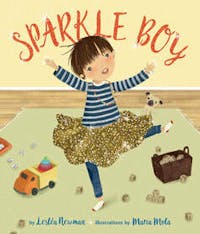
Sparkle Boy
written by Lesléa Newman, illustrated by Maria Mola
Grades Pre-K–5
Casey loves to play with his blocks, puzzles, and dump truck, and he also loves things that shimmer, glitter, and sparkle. Casey’s older sister, Jessie, thinks this is weird. Shimmery, glittery, sparkly things are only for girls. Right?
When Casey and Jessie head to the library for story time, Casey proudly wears his shimmery skirt and sparkly bracelet. His nails glitter in the light. Jessie insists that Casey looks silly. It’s one thing to dress like this around the house, but going outside as a “sparkle boy” is another thing entirely. What will happen when the other kids see him?
This sweet and refreshing story speaks to us all about acceptance, respect, and the simple freedom to be yourself. Shimmery, glittery, sparkly things are fun—for everyone!
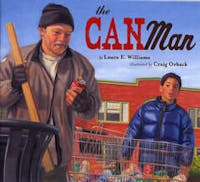
The Can Man
written by Laura E. Williams, illustrated by Craig Orback
Grades PreK–5
Tim’s birthday is just a week away, and more than anything he wants a skateboard. But money is tight, and Tim knows his family cannot afford to buy him a board.
As Tim ponders how he might earn money for a skateboard, he hears The Can Man down the street collecting empty soft drink cans. The clang of the cans in the homeless man’s cart gives Tim an idea. He will collect cans too, and cash them in for the redemption money. By the end of the week, Tim has almost reached his goal—until a couple of chance encounters with The Can Man change everything.
Katie Potter



